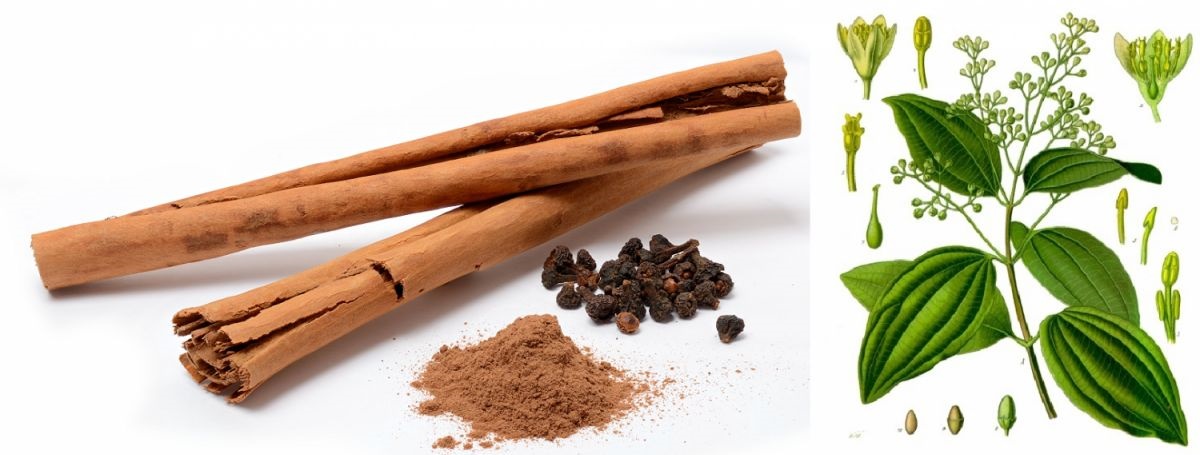The white, non-toxic solid (phenylacrylic acid) with a characteristic odour. Cinnamic acid is an unsaturated carboxylic acid and is a so-called aromatic compound. It is found in some plants; among other things, the substance is also contained in grapes. The acid is present in red wine (100-200 mg/l) and white wine (10-20 mg/l). In addition to cinnamaldehyde and eugenol, the acid is an important component of cinnamon. The picture on the left shows cinnamon sticks, cinnamon powder and dried flowers; the picture on the right shows a flowering branch.

This spice (also known as cinnamon) from the dried bark of cinnamon trees is sold ground as a brown powder or as a cinnamon stick (caneel). The unmistakable flavour is reminiscent of apple pie and Christmas biscuits. Cinnamon was already used in the Middle Ages to flavour alcoholic beverages, such as hypocras. Today, it is found in many spirits such as absinthe, aquavit, byrrh and ouzo, in cinzano and in many mixed drinks such as eggnog, mulled wine and mead. See a list of all wine ingredients under total extract.
Voices of our members

Using the encyclopaedia is not only time-saving, but also extremely convenient. What's more, the information is always up to date.
Markus J. Eser
Weinakademiker und Herausgeber „Der Weinkalender“